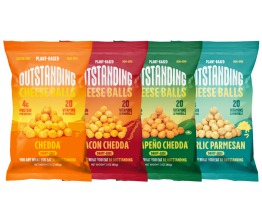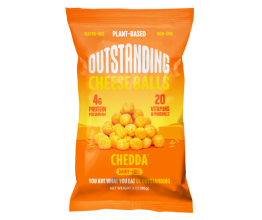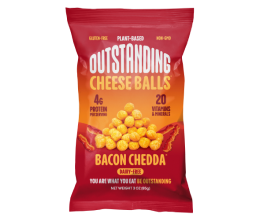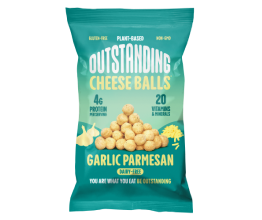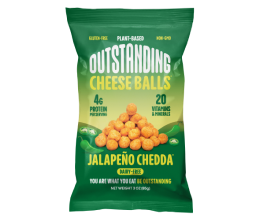Everything You Need to Know About Pea Protein
Protein – it’s something everyone talks about, but nobody ever seems to get enough. Did you know that for every pound of body weight you carry, you should be eating one gram of protein every day? Yes, that is why gym bros are obsessed with protein shakes. If you’re a super active person, that daily recommendation is even higher.
Basically, it’s not all the surprising that many of us aren’t exactly where we need to be on the protein scare, and we suffer consequences without ever getting to the root of the issue. Low energy, poor workout recovery, and constant hunger pangs – these are just a few symptoms of being protein deficient.
If you’re a vegetarian or vegan, you already know that the struggle is real. There are ways to get protein through plant-based products, but these can be hard to fit into your daily diet with consistency and convenience. And eating beans day in and day out can get old fast, not to mention wreaking havoc on your digestive system.
That’s why we’re so excited to welcome a legitimate plant-based protein to the market once and for all in the form of pea protein. It’s a simple, convenient way to supplement your protein intake each day without cooking elaborate meals or stressing about macro calculations, because nobody has time for that.
What makes pea protein special, and is it really the one-stop protein solution we’ve been waiting on for so long? Let’s examine all the key details of pea protein in this article so you have the facts and can make the best decision for yourself.
What Is Pea Protein?
This is one of those products that tells you exactly what it is: plant-based protein powder is derived from peas, the small spherical seed that comes from the pod fruit Pisum sativum.
Those little round veggies you never wanted to eat as a kid? They’re back to save the day!
Here are the basics about pea protein powder, so you know exactly what you’re getting into.
How It’s Made
Not every manufacturer uses the same methods to make pea protein, but we’ve figured out the general approach.
Producers typically use yellow peas because they contain higher quality compounds and lower amounts of sugar compared to the green peas you already know.
The peas are first dried to remove all excess moisture, then ground down into a fine powder. From there, starch and fiber are separated from the meal to that the pure, concentrated protein substance remains. This is known as pea protein isolate.
Depending on the quality of the product, producers will include additional flavors or preservatives, so it’s always important to run down that full list of ingredients and know what goes into your powder.
Nutritional Profile
Pea proteins will vary in terms of nutrition facts, but in general, you can expect about 20 grams of protein from a 90-calorie scoop of the powder.
You may find trace amounts of fat or carbohydrates leftover from the production process, but these are usually negligible in your daily calculations of macronutrients—phew.
What’s more compelling about pea protein is the quality of the protein you get from this plant-based source. Notably, it contains all nine essential amino acids that can’t be created in the body and must be absorbed from food.
While these essential aminos can be found in sources like beef, chicken, fish, and pork, these are obviously not on the menu for anyone living the vegetarian or vegan lifestyle. Pea protein is one of the best ways to load up on top-tier protein for plant-based folks, without having to completely overhaul your diet or survive on tofu alone.
Branched-chain amino acids are also found in abundance within pea protein, including arginine, leucine, valine, and others. These are key to recovering quickly from strenuous workouts and regulating key systems of the body like circulation, respiration, and heart health.
Finally, pea protein powders contain some crucial minerals, namely iron, which is alarmingly deficient in a large segment of Americans. You know, when you get dizzy every time you stand up or are extra winded after climbing a flight of stairs? That could be your iron levels (or at least, that’s what we’ll keep telling ourselves). Plant-based dieters have an especially tough time getting the iron they need, so that’s just one more reason for them to consider pea protein.
The Best Pea Protein Powders
Maybe you’re already convinced to grab a bag or jug of pea protein powder, but you aren’t sure where to look. There is no shortage of products on the market at the moment, but as you might expect, they aren’t created equal.
Be sure to take a look at that nutrition facts panel, watching out for any artificial flavors, unwanted additives, or ingredients that look better suited for a NASA project than in your smoothie. We’re not trying to be bamboozled by additives here.
Sometimes, what’s missing from the label (or on the front of the package) can tell you all you need to know about a pea protein product.
For example, if there’s no indication that the product is GMO-free, gluten-free, dairy-free, or organic, these are all red flags that should set off alarms right away.
Nowadays, brands are eager to tell you all these key facts about their products, and if this information isn’t readily conveyed, they might be hiding some unsavory truths. Processing aids, fillers, even traces of heavy metals and pesticides – these are all no-gos, so be vigilant.
Finally, be aware of other compounds that may be included in pea protein, such as additional aminos or minerals. You may or may not need (or even want) these extras, and they can tally up the price tag quickly. Know what you want and get what you pay for.
Advantages of Pea Protein
We’ve mentioned some pea protein benefits already, including the complete amino profile of the powder and the multiple micronutrients included in every serving. But that’s not all!
Read on to learn about the other advantages that pea protein has to offer.
Absorption and Satiety
Everyone knows that protein is vital to health and wellbeing, but have you considered that different protein sources absorb at different rates into the body and impact how our systems react to the nutrients?
With that in mind, pea protein is one of the best-digesting proteins on the market right now, with a digestibility rate of 98%. That’s far greater than beef, chicken, or even plant-based foods like tofu or tempeh.
With a higher rate of digestibility, you get far more mileage out of every scoop of pea protein, ensuring it is absorbed readily and effectively instead of just passing through your system.
Plus, greater digestion means that pea protein actually keeps you full and satisfied for hours at a time, so that you won’t find yourself reaching for snacks to fend off that crash. You can if you want to, though. Nothing hits quite like a good snack.
Safe and Hypoallergenic
You know that pea protein is perfect for plant-based eaters, but it’s also a great option for anyone with other common dietary limitations or restrictions.
Whey protein, for example, is loaded with lactose, meaning it’s not suitable for anyone with that intolerance. Other plant proteins derived from grains, nuts, seeds, or soybeans also raise some concerns about allergies and could cause issues in the stomach if consumed in larger quantities.
That’s why pea protein is truly in its own league, providing you a complete source of protein without having to fret about allergies, intolerances, or other health concerns you face.
Whether you’re going gluten-free, dairy-free, soy-free, or just trying out the plant-based diet as an experiment or challenge, pea protein is a major asset you can’t afford to overlook.
Best Ways to Take Pea Protein
Ready to add pea protein to your repertoire? About time! Here are the best ways to include pea protein in your diet and enjoy it to the fullest.
Shakes and Smoothies
That daily shake you make every morning to rev the engine? You already load it up with quality leafy greens, frozen berries, and almond milk, so consider adding a scoop of pea protein to the mix and tacking on 20 grams of the good stuff.
Pea protein isolate mixes seamlessly into any shake or smoothie, whether you prefer the unflavored version, vanilla, or any other flavor you can find.
It’s so easy to add pea protein to your shake that it’s basically a no-brainer, and you can carry your smoothie cup around all day just so that people know you lift (or you pretend you do).
Mixed into Your Favorite Foods
Maybe smoothies aren’t your thing, but what about oatmeal, Greek yogurt, cottage cheese, or breakfast cereal? These are foods you eat every day, and once again, adding a scoop of pea protein is so simple.
You might need to stir in the powder for an extra minute or so, but beyond that, the process couldn’t be any easier.
Delicious Healthy Snacks
Did you know that pea protein can add a healthy boost to your favorite snacks? Maybe you like to bake your own trail mix or health bars at home, or just pop open a bag of PigOut Pigless Pork Rinds from Outstanding Foods!
Pea protein is surprisingly versatile when cooking or baking, so give it a try and see what you come up with next.
Conclusion
With so many benefits and virtually no downsides, why wouldn’t you want to give pea protein a try? Say goodbye to those little green veggies that Gregor Mendel was obsessed with and hello to a powder that can seriously change your nutrition game.
Sources:
Plant-Based Protein: Pea and Soy Protein Isolates | Nutritionfacts.org
Pea Protein is Everywhere, is it Healthy? | American Institute for Cancer Research
